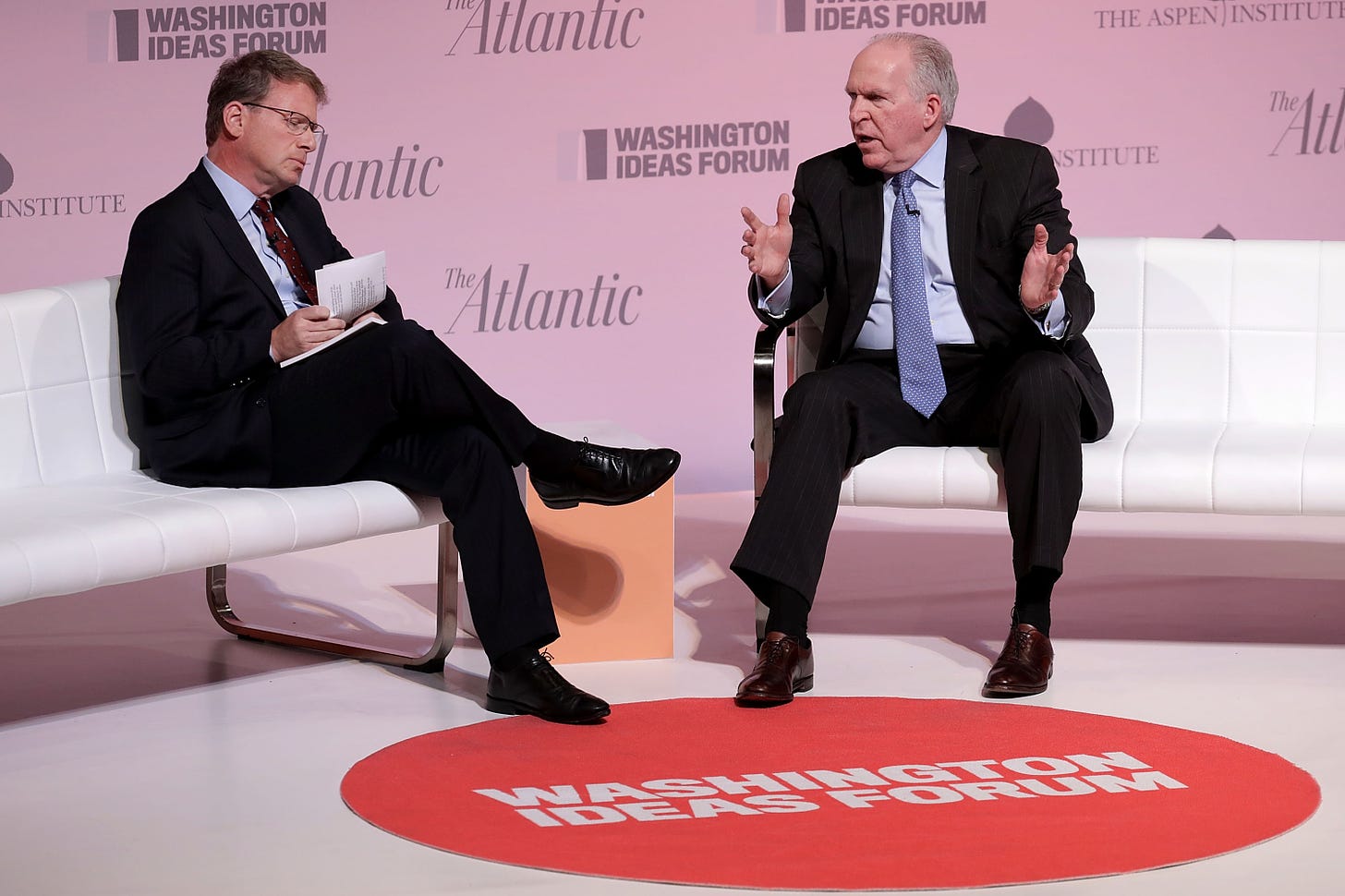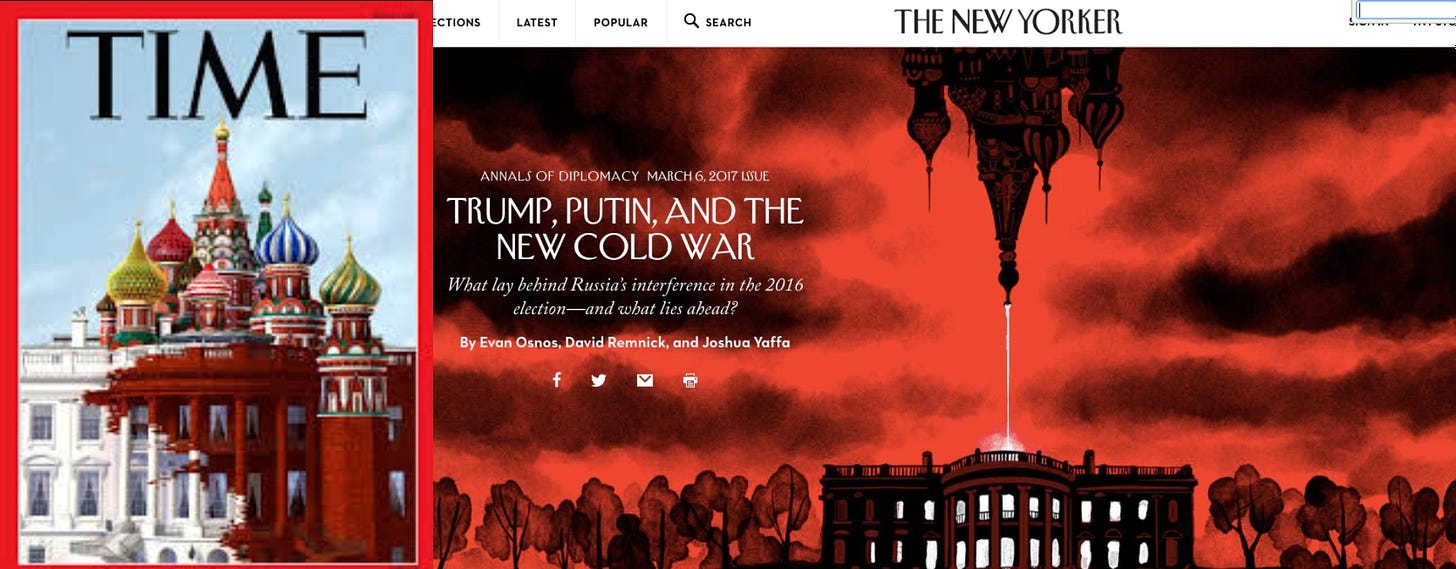
The Trump era has engendered numerous fractures, one might say realignments, in the political order. Long-time ideological allies are now adversaries, and long-time political enemies are now in full-fledged coalitions. These shifts are not temporary or Trump-dependent but enduring, because they are grounded in shared core beliefs about the defining debates shaping our new politics and how to consolidate real power: call it the Lincoln Project Syndrome.
 WASHINGTON, DC – Former Obama CIA Director John Brennan (R) with The Atlantic’s Editor-in-Chief Jeffrey Goldberg during the Washington Ideas Forum at the Harman Center for the Arts (Photo by Chip Somodevilla/Getty Images)
WASHINGTON, DC – Former Obama CIA Director John Brennan (R) with The Atlantic’s Editor-in-Chief Jeffrey Goldberg during the Washington Ideas Forum at the Harman Center for the Arts (Photo by Chip Somodevilla/Getty Images)
One major reason for this transformation is a fundamental difference in how to understand Trump: is he the primary author of America’s pathologies or merely a symptom of pathologies which long pre-dated him? Relatedly: is removing Trump from power a vital step in returning the U.S. to its previous status as a benevolent and law-abiding republic, or is isolating him as the principal cause of the nation’s woes a cynical propaganda tactic for whitewashing the sins of those who are actually responsible so that they can rebuild their reputations and again assume power? Were Trump’s policies some radical, unprecedented aberration from U.S. political tradition or, stylistic quirks aside, a standard continuation of it?
How one answers those questions — along with whether one believed that the Kremlin had infiltrated the White House and assumed command of the levers of U.S. power through elaborate blackmail schemes or whether one recognized that this was a CIA-fabricated propaganda fraud excavated from crusty Cold War scripts — determined where one fell on many of the most contentious political debates over the last four years (my answer to all of the questions is the latter choice).
That’s why the millions of Americans who, due to fear of Trump, began paying close attention to politics and consuming news products only in 2016 were such easy marks for peddling fear-mongering narratives and revisionism: because they lacked the crucial historical context in which to place Trump and understand his ascension to the presidency.
But there is another critical debate, one that has rarely been conducted explicitly, that is also a key determinant of where one falls in this new alignment: what are the real power centers in the U.S., the ones most responsible for its worst acts and greatest dangers?
There are many places where that answer resides. One can find it right now in the ongoing effort to denounce the Trump White House for attempting to remove troops from Afghanistan, where the U.S. has been fighting and shooting and bombing in a war now about to enter its 20th year. Take a look at who is demanding that those troops remain, and there you will find the real axis of power — all of its component parts — in the United States…
Continue Reading
